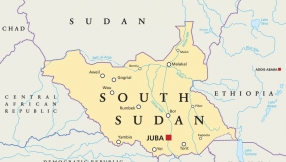Europe is a continent marked by church decline but it is not entirely dying, says Niek Tramper.
In fact, the General Secretary of the European Evangelical Alliance believes the word “paradox” is best describes the state of the church in the region.
Just a few weeks ago he attended a service at an Anglican church in Venice – he and just six others.
“You can hardly discern a future for such a church and there are many traditional churches like this in villages and cities all over Europe,” he concedes.
Conversely, he recalls a meeting with a Ghanaian who came to Dusseldorf in Germany 20 years ago with a desire to return the love back to the continent that brought Christianity to his own country. He now pastors a 1,000-strong multinational church that holds six services every Sunday and includes many Germans among its members.
This pastor is not alone. There are many African pastors coming to Europe to share the Gospel – GATE (Gift from Africa to Europe) is an umbrella organisation set up specifically to support them.
What they all remark on is Europe’s undeniable material wealth and equally undeniable spiritual poverty.
“This used to be a mission sending continent. Now it has become a continent to be missionised again,” Tramper told the Mission-Net congress in Erfurt, Germany.
“No epoch has seen so many Christian newspapers, articles, conferences, websites, and so many agnostics as today.”
Tramper says he agrees with the prognosis of US sociologist Philip Jenkins, who is so pessimistic about the future of the traditional church in Europe that he told Christians to prepare for its burial.
In spite of the gloomy predictions, Tramper sees signs of renewal and revival in three areas. The first is in movements coming out of the established churches, such as the Alpha course and Taizé.
The second area of growth is in the migrant churches, which are the fastest growing in Europe. The continent’s two largest churches were planted by Nigerians, one in London and the other in Ukrainian capital Kiev.
“The migrant churches can help us to identify modern western idols. We can help them to recognise secularisation,” said Tramper.
The third cause for hope is the proliferation of church planting in the last decade. There are now more than 20 pan-European church planting networks and churches have been planted in every city of Europe.
Exactly why some churches in Europe have experienced exceptional growth and others haven’t though, isn’t clear.
“Are there secrets behind it? I don’t know,” says Tramper.
“But real, genuine love … love cannot be replaced with activities. You share the love of Christ in your day to day living.”
He continued: “Many churches in Europe are not sure about the difference between religiosity and faith.
“In Europe people tend to be very religious but not very faithful. Faith is not about convictions or feelings, but we have to live it and be sure about it, not hesitating with this truth about what God has done.”
Undoubtedly, this is a time of “crisis” for Europe – both within the church and outside it – but Tramper remains optimistic.
As Europe’s history has often shown, at times of crisis, “revival is very near”.
Most Popular
Stay up to date with Christian TodayNews

NI conversion therapy proposal will criminalise innocent behaviour
A proposal to ban conversion therapy in Northern Ireland has been labelled "jellyfish legislation".

Renewing the old and sanctifying the new in education
Hebrew academic and Jewish scholar Irene Lancaster reflects on what society can learn from the Jewish approach to education and the importance of nurturing the soul.

Half of students think the Bible is relevant today
Is the glass half empty, or is it half full?

Lancashire called to pray for partners in crisis-hit South Sudan
The Diocese of Blackburn has forged strong ties with its South Sudanese counterpart in Liwolo.





